- Home
- A. G. Riddle
Genome (The Extinction Files Book 2)
Genome (The Extinction Files Book 2) Read online
Genome
A.G. Riddle
Contents
Copyright
A Note About Fact & Fiction
Prologue
Chapter 1
Chapter 2
Chapter 3
Chapter 4
Chapter 5
Chapter 6
Chapter 7
Chapter 8
Chapter 9
Chapter 10
Chapter 11
Chapter 12
Chapter 13
Chapter 14
Chapter 15
Chapter 16
Chapter 17
Chapter 18
Chapter 19
Chapter 20
Chapter 21
Chapter 22
Chapter 23
Chapter 24
Chapter 25
Chapter 26
Chapter 27
Chapter 28
Chapter 29
Chapter 30
Chapter 31
Chapter 32
Chapter 33
Chapter 34
Chapter 35
Chapter 36
Chapter 37
Chapter 38
Chapter 39
Chapter 40
Chapter 41
Chapter 42
Chapter 43
Chapter 44
Chapter 45
Chapter 46
Chapter 47
Chapter 48
Chapter 49
Chapter 50
Chapter 51
Chapter 52
Chapter 53
Chapter 54
Chapter 55
Chapter 56
Chapter 57
Chapter 58
Chapter 59
Chapter 60
Chapter 61
Chapter 62
Chapter 63
Chapter 64
Chapter 65
Chapter 66
Chapter 67
Chapter 68
Chapter 69
Chapter 70
Chapter 71
Chapter 72
Chapter 73
Chapter 74
Chapter 75
Chapter 76
Chapter 77
Chapter 78
Chapter 79
Chapter 80
Chapter 81
Chapter 82
Chapter 83
Chapter 84
Chapter 85
Epilogue
Next Book
Author’s Note
Acknowledgments
Also by A.G. Riddle
About the Author
RIDDLE INC.
RALEIGH, NORTH CAROLINA
Books for a better world.
This novel is fiction, except for the parts that aren’t.
Copyright © 2017 by A.G. Riddle
All rights reserved.
ISBN: 1-940026-13
ISBN-13: 978-1-940026-13-8
Edition 1.0.0
Printed in the United States of America.
www.AGRiddle.com
Visit the author’s web site for book extras, free stories, and more.
A Note About Fact & Fiction
Genome is a work of both fact and fiction. Visit agriddle.com after the story to find out how much of what you read is true.
Thanks for reading.
- Gerry
A.G. Riddle
Prologue
July 17, 1941
Adeline’s family left Berlin in the middle of the night. Her father told her they were going on a vacation, but she knew something was wrong. Her parents were too nervous. Her mother had packed too much—and the wrong things: sentimental items and documents from the safe.
For two days and three nights, they lived on the train. They took their meals in the dining car. Her parents played cards in the afternoon. Her father read her favorite book aloud—Alice in Wonderland. The train cars were crowded, mostly with troops and office workers, but also a few families. The adults looked as nervous as Adeline’s parents.
The train was searched periodically. Stone-faced soldiers demanded their papers. Adeline’s mother always held her breath, but her father’s expression was a mirror of the soldiers’.
The Nazi flag hung from the roof of every train station in France, and soldiers crowded the platforms. The searches grew more frequent, the interrogations longer.
At the Spanish border, Adeline was surprised when her father presented a paper to the soldiers and said, “I am conducting research for the betterment of the Reich.”
The SS officer scanned the paper, then eyed Adeline and her mother. “And why have you brought your wife and child?”
“My wife assists me, and my daughter is only five.”
“I asked why she is here, not her age.”
“She is here out of necessity. She simply could not remain in Berlin alone, and we were unable to find anyone for her to stay with.”
The soldier looked unconvinced.
Adeline’s father sighed. “Obersturmführer, if you would like to take my daughter back to Berlin and babysit her for a month until I return, I invite you to do so. It will aid my research greatly.”
Adeline felt her eyes welling with tears. She turned away so no one could see.
The soldier grunted, and loud clicks followed. The passes being stamped, Adeline assumed.
Her mother relaxed when the train started again. Her father moved over beside Adeline and pulled her into a hug. With his lips brushing her ear, he whispered, “That was just a story to make the mean man go away. You’re the whole reason for our trip, my dear. You’ll see.”
He tried to distract her by reading Grimm’s Fairy Tales, Snow White, and Cinderella.
The train was searched less frequently in Spain. Finally, they disembarked in the small town of Santillana del Mar, just miles from Spain’s northern coast. In the town square, they met up with a dozen men her father said would be helping with his research. Together, they drove out of town, through the countryside, and made camp at the mouth of a cave.
Adeline’s father said it was the Cave of Altamira, and that it was a very important place—a place where messages had been left for them. He and the men spent every spare minute in the cave, only exiting to eat, sleep, and use the restroom.
They had been camping for a week when Adeline’s father woke her one morning, just before dawn. Her mother lay beside her, still asleep in the tent the three of them shared.
“Be quiet, my love,” he whispered.
He led her through the camp, where two men were warming coffee by the fire. He held a battery-powered lantern to light their way.
At the entrance to the cave, he paused and raised his eyebrows. “Ready?”
Adeline nodded, excited.
The cave wasn’t what she expected. One second the passage was wide and tall, the next it was cramped, requiring her father to stoop, and occasionally to crawl. It twisted and turned and branched at random, as if they were in the roots of a giant tree. But her father seemed to know just which way to go, as if he had a map in his head. Adeline felt like Alice after she had gone down the rabbit hole. She was big, and the world around her had grown small and cramped.
Her father stopped and shined the lamp on a wall. Adeline gasped. Red handprints covered it. Some were merely the silhouette of the hand, as if the artist had spray-painted the wall while holding her hand against it.
“It’s a message,” her father whispered. “They’re saying to us, ‘We were here. And we think the way you do. You are in the right place.’”
Adeline held her hand out to touch the wall, but her father caught her. “You mustn’t touch. The art is too fragile. Come, there’s
more.”
A few minutes later, her father stopped and squatted down, his face next to hers. “Look up.”
He pointed the electric lamp at the ceiling, revealing a mural of a herd of dark red animals, the size of cows but with dark fur on their backs and legs.
Adeline was speechless. She felt herself wandering, taking in the vast tableau that seemed to have no end. The animals were detailed. The rolling contours of the cave ceiling made some look three-dimensional. Her father stepped back and swept the beam across the ceiling, casting some of the animals in shadow, making the herd look as if it was moving.
“What are they?” Adeline asked.
“Steppe bison.”
Adeline had never heard of the animal.
“They are all dead now,” her father said. “They have been for a long time. Do you know what it means when every member of a species is dead?”
Adeline shook her head.
“They are extinct. This is another message. Can you guess it?”
Adeline thought for a moment. “They hunted bison?”
“Yes. But more. It tells us when. They hunted them a very, very long time ago. They lived a very long time ago. Taken together, the artists are telling us: ‘We were here. We think the way you do. And we lived a very, very long time ago.’”
He led her deeper into the cave, to a painting on the wall. It was a doe, standing alone, regal. “Beautiful, isn’t it?” he whispered.
She nodded.
“Not half as beautiful as you.”
A few feet away, they stopped at a small alcove where several holes had been dug. Metal containers were stacked up.
He opened one, revealing long bones, of legs, Adeline thought. Another held part of a skull.
“These are the artists?” she asked.
“Perhaps. Or someone like them. But these bones are much more. They are part of a larger message, sent across time, waiting for us to find, to study and understand when we’re ready.”
Adeline bunched up her eyebrows.
Her father seemed to read her confusion. “These bones are like Hansel and Gretel’s bread crumbs.”
Adeline knew the story well. During a great famine, Hansel and Gretel’s parents were afraid of starving. They were so scared that they led their only two children into the woods and left them there, ridding themselves of two mouths to feed. But Hansel and Gretel dropped bread crumbs along the way, marking the path back home. To the children’s horror, they discover that wolves had eaten the bread crumbs, stranding them in the dangerous wilderness.
Adeline considered the story, but she couldn’t figure out what it had to do with the bones. “Bread crumbs to what, Papa?”
“The truth. Someday, we will find all the bones like these. They will mark a path, just like Hansel and Gretel’s bread crumbs, and we will finally know how we became what we are… and what we are destined to become.”
He squatted down to look her in the eye. “The bones are pieces of a puzzle, left for us to find someday—when we are ready to put them together, when our technology can unravel the mystery. It will be the greatest discovery of all time. We only need to find the pieces. Would you like to help me search for them?”
Adeline nodded.
“Someday we will. But right now the world is like the woods in Hansel and Gretel. Dangerous. You’ve seen the wolves.”
She knitted her eyebrows.
He smiled. “The mean man on the train.” He tucked her hair behind her ear. “But they will never harm you. When your mother wakes, she will take you to a city on the sea, and you’ll sail away, to another city on the sea, in a faraway place that your mother knows well.”
He gripped her shoulders. “You’ll return when it’s safe.”
“And you’re coming with us.”
He said nothing.
She shook her head.
He gripped her tighter. “I can’t.”
“Why, Papa?”
“They want my work. They would chase me to the end of the earth for it. I’ll go back to Berlin, and hide what I’ve found. And wait. You and your mother will return when the world is out of the woods. And we’ll go off and find the rest of the bread crumbs. Together.”
Chapter 1
The shouts woke Dr. Peyton Shaw. She reached down and tucked the heavy wool blanket into her sides, trying to get warmer. A space heater buzzed a few feet away, but the small office was still frigid.
Beyond the closed door, the shouts turned to excited conversation. Peyton caught only phrases.
“No genomic match.”
“Definitely not a Neanderthal.”
“… a new human species.”
The office’s only window was a wide piece of plate glass that looked out on the ship’s cargo hold. The cavernous space had been converted into a research lab for the mission, and it was always teeming with activity. The glow of fluorescent lamps seeped into the office, casting it in a pale light, like the streets of London on a foggy night. Peyton wanted to go out and see what the commotion was about, but she was still exhausted from her last dive to the shipwreck. So she lay in bed and listened, her eyes drifting to the walls covered with photographs of bones and dead bodies. It looked like a crime scene investigation was underway.
Peyton was used to investigations and uncomfortable quarters. She had spent her life investigating outbreaks in hot zones around the world. The biggest challenge of her career had come last month, when the X1 pandemic had ravaged the world. Billions were infected. Thirty million had died, including many of Peyton’s colleagues at the CDC and students in her EIS program. The losses had been hard, especially once she learned the truth about the deadly event.
In the course of tracing the pandemic, Peyton had learned that the outbreak was an act of bioterrorism. Yuri Pachenko and his organization, the Citium, had unleashed the pathogen on the world for one reason: to offer a cure. But the cure was more than it seemed. It stopped the pathogen, but it also contained a nanotechnology called Rapture.
Little was known about Rapture, other than that it was part of a larger device called the Looking Glass. When combined with two other technologies, Rook and Rendition, Rapture and the Looking Glass would give Yuri control of every person on earth.
Already struggling in the wake of the millions of deaths caused by the pandemic, governments around the world were now desperate to prevent the completion of the Looking Glass. They were searching the world for the Citium, but they had very few leads to go on, and that search had been fruitless so far.
Lin Shaw, Peyton’s mother, had offered another solution. She insisted that the only hope of stopping Yuri lay in the research from a competing Citium project. That research was aboard the Beagle, a Citium submarine that Yuri had sunk thirty years ago. Lin had served on the Beagle and was more knowledgeable about the vessel than anyone alive. She believed the data and samples aboard the submarine would reveal a code buried in the human genome, and a revelation that would rewrite human history.
Many remained skeptical of Lin’s claims, and for good reason: until recently, she had been a member of the Citium. She had also been cryptic and unwilling to share what she knew. But her promise was good enough for Peyton. If there was even a chance that the research on the Beagle would stop Yuri and the Looking Glass, Peyton would go to the ends of the earth to find it. In a way, she had.
Two weeks ago, in Alaska, she, along with her mother, had boarded a Russian icebreaker, the Arktika, and sailed north toward the Arctic Circle. Four days into the voyage, everyone gathered on the deck to watch the sun slip past the horizon for the last time. They worked in darkness after that, the sun never rising. It was as if they were a ship out of time, in another dimension, where the laws of the planet didn’t apply. The only natural light came from the Aurora Borealis, which made the place feel even more alien. Its phosphorescent green, blue, and orange streaks reminded Peyton of the first time she saw them—a mere three weeks ago, on the Shetland Islands. She had reunited with her father there. And s
pent time with Desmond Hughes after thirteen years. That seemed like a different lifetime now. A dream. And a good one.
For the researchers on the Arktika, this mission was about stopping the Citium and making a scientific discovery of historic proportions. For Peyton, it was about that as well—but also much more. Yuri and the Citium had taken both her father, her brother, and Desmond from her. Her father they had killed; Desmond they had captured. The Beagle was the key to stopping the Citium, but she hoped it would lead her back to Desmond. Her mother had promised her that it would.
Peyton rolled onto her side and looked up at the longest wall of the office, half of which was covered with a map of the sub. Sections they had explored were highlighted, yet although they had been making dives from the Arktika to the Beagle for ten days now, and cataloguing everything they found, they’d still explored less than half of the massive nuclear submarine.

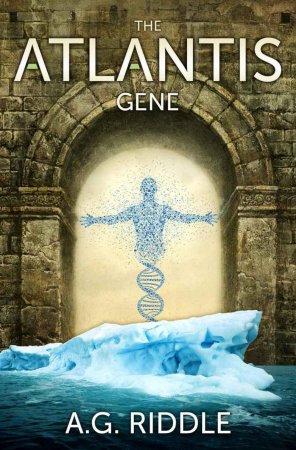 The Atlantis Gene: A Thriller
The Atlantis Gene: A Thriller The Solar War (The Long Winter Book 2)
The Solar War (The Long Winter Book 2) The Extinction Files Box Set
The Extinction Files Box Set The Atlantis Trilogy Box Set- The Complete Series
The Atlantis Trilogy Box Set- The Complete Series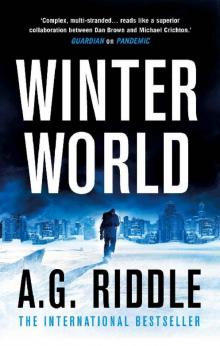 Winter World
Winter World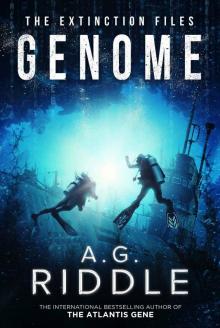 Genome
Genome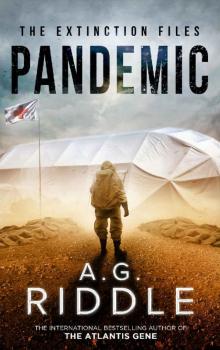 Pandemic (The Extinction Files Book 1)
Pandemic (The Extinction Files Book 1)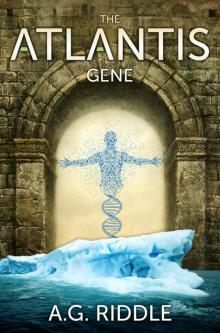 The Atlantis Gene: A Thriller (The Origin Mystery, Book 1)
The Atlantis Gene: A Thriller (The Origin Mystery, Book 1)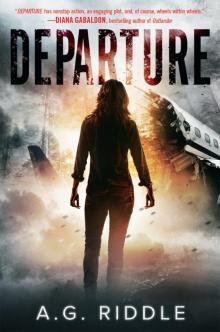 Departure
Departure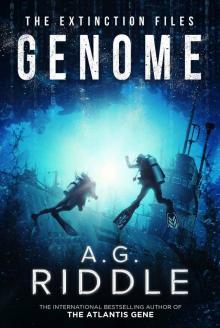 Genome (The Extinction Files Book 2)
Genome (The Extinction Files Book 2)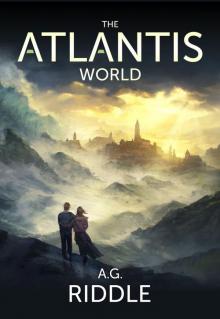 The Atlantis World (The Origin Mystery, Book 3)
The Atlantis World (The Origin Mystery, Book 3)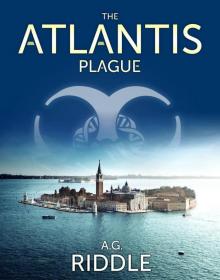 The Atlantis Plague: A Thriller (The Origin Mystery, Book 2)
The Atlantis Plague: A Thriller (The Origin Mystery, Book 2)